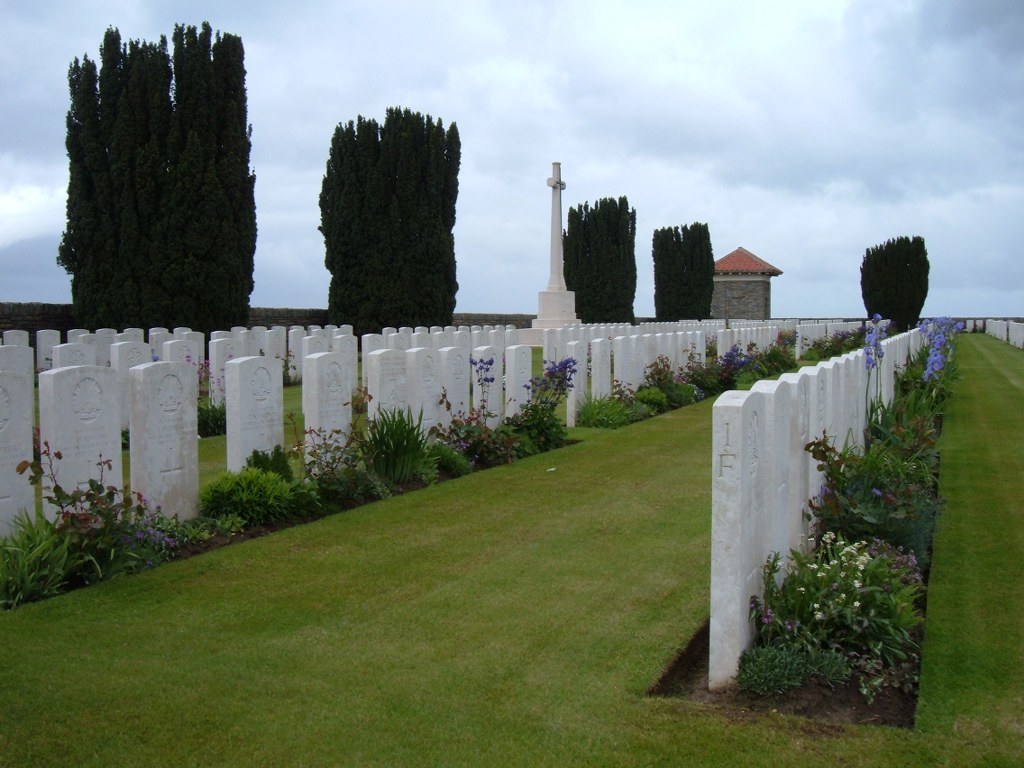Percy Fox
Date of birth: 1884
Date of death: 2.9.1918
Area: Brotherton
Regiment: King's Own Yorkshire Light Infantry
Family information: Husband of Louisa Fox
Rank: Sergeant
Service number: 241146
War Service
Percy joined either the 1/5th or the 2/5th Battalion of the King’s Own Yorkshire Light Infantry (KOYLI) which was a territorial regiment formed in 1914 at Doncaster after the War Office issued instructions for all units of the Territorial Force to form a reserve unit. They became Part of the 3rd West Riding Brigade, West Riding Division and moved on mobilisation to Doncaster and in November 1914 to Gainsborough then on to York in February 1915.
1915
On 31 March the battalions were warned that they would go on overseas service and entrainment began. On 12 April 1915 Divisional infantry went via Folkestone Boulogne while all other units went from Southampton to Le Havre. And on 15th May 1915 the formation became the 148th Brigade, 49th (West Riding) Division. By 19 April the Division had concentrated in the area of Estaires - Merville – Neuf Berquin. The Division then remained in France and Flanders and took part in the following engagements:
The Battle of Aubers Ridge (9 May)
The defence against the first Phosgene attack (19 December)
1916
The Battle of Albert*
The Battle of Bazentin Ridge*
The Battle of Pozieres Ridge*
The Battle of Flers-Courcelette*
(The battles marked * are phases of the Battles of the Somme 1916)
1917
Operations on the Flanders Coast (Hush)
The Battle of Poelcapelle**
(The battle marked ** is a phase of the Third Battles of the Ypres)
On the 2nd February 1918 the 1/5th and the 2/5th were amalgamated into the 5th Battalion and men were renumbered - probably the reason why Percy had 2 service numbers) They transferred to the 187th Brigade in the 62nd (2nd West Riding) Division.
1918
The Battle of Bapaume~ (25 March)
The First Battle of Arras 1918~ (28 March)
(The battles marked ~ are phases of the First Battles of the Somme 1918)
The Battle of the Tardenois (part of the Battles of the Marne 1918) (20 - 30 July)
The Battle of the Scarpe^ (26 - 30 August)
The Battle of the Drocourt-Queant Line^ (2 September)
(The battles marked ^ are phases of the Second Battles of Arras 1918
Percy Fox was killed in action on 2nd September 1918, the evidence pointing to this occurring whilst involved in the Battle of the Drocourt-Queant Line.
The Drocourt-Quéant Line ran between the French cities of Drocourt and Quéant and was part of a defensive system that ran from a point within the Hindenburg Line, eleven miles west of Cambrai, northward to within seven miles west of Douai and terminated along the front east of Armentières.
Information given on the Commonwealth War Graves Commission file on Percy Fox indicates that he was awarded the M.M. (Military Medal). However, to date no information can be found with regard to this award.
Family Life
Percy was seemingly born at Bottomboats which is located near Stanley, Wakefield, about 1884. His parents were not Brotherton born as his father Charles came from Newton, near Fairburn and his mother Eliza from Bedworth in Warwickshire. In 1891 they lived at New Row Cottage, Kippax Road, Fairburn and Charles was a ‘miner’ by occupation. As well as Percy (aged 6) other children included Eliza (5), Mary E. (3) and John (1).
By 1901 the family were in Low Street, Brotherton. Other than that there were only two changes. Firstly, there was the addition of James (7) and, secondly, Percy being 17 years old was in employment as a ‘pit-pony driver.’ They must have moved to this location about 1893 because James was born in Brotherton.
In 1906 Percy married Louisa Hutchinson who according to 1911 census information was also born at Bottomboats. There was a Hutchinson family living very close, but the nearest match was Laura. If this was the correct family then Percy’s brother-in-law was Gregory Hutchinson who also became a casualty (see later account).
By 1901 the couple had two children, Louisa (3) and Hilda (1). Percy was then a ‘hewer on the coal face’ and they still lived in Low Street.
 Vaulx Hill Cemetery
Vaulx Hill Cemetery

